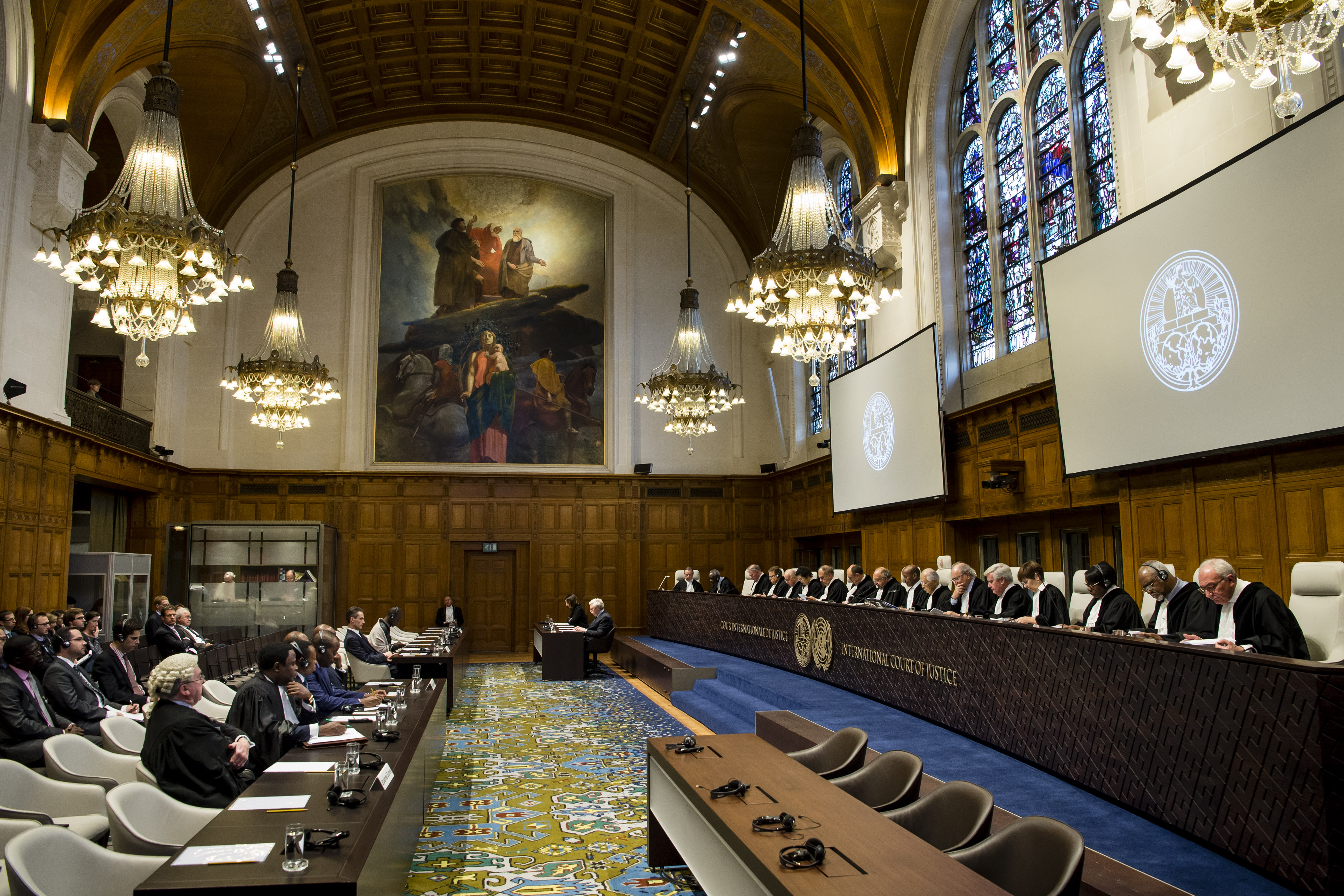Geoffrey Corn Weighs in On Civilian Harm Mitigation
Geoffrey S.
Published by The Lawfare Institute
in Cooperation With

Geoffrey S. Corn of the South Texas College of Law writes in with the following comments on our recent exchange concerning the Army's new manual on minimizing civilian casualties.
I feel compelled to offer my thoughts on the exchange between Greg McNeal and Jonathan Horowitz. First, on the issue of emphasizing strategic and operational impact and the risk this somehow suggests the law is maleable. I don't believe this concern has any merit. In fact, it is a huge mistake to assume this somehow minimizes the legal aspect of the civilian protection obligation. First, legal obligations are non-derogable, and commanders know that. Unlike doctrine, there is no freedom to adjust them. Second, it is quite often the case that what the law permits is strategically or operationally detrimental, particularly in the context of targeting law. I find it less than ironic that I am writing this post from a perch overlooking the Bay of Panama and the old Fort Amador during my first visit back here since I left in 1988. Sitting in the middle of the old Amador is the tomb of General Omar Torrijos. When U.S. Army forces attacked Panamanian Defense Force barracks on one side of the Amador golf course from the side that housed U.S. families, they were under strict orders not to damage that tomb, which was right in the middle of the fight. Why? It was perceived as a potential strategic disaster---our fight was with Noriega, not Torrijos or the members of the PDF who were disaffected with their crony leadership. The law would have permitted damage to the tomb, but it was nonetheless prohibited. Of course, this does not mean there were no civilian casualties in Panama. There were. But it does indicate that strategic and operational considerations will often result in limitations on the use of combat power above and beyond that required by the law---a classic function of rules of engagement. Encouraging commanders to consider the strategic and operational impact of targeting decisions is not only wise, it is essential. It helps to emphasize a perhaps overly simplistic approach to operational legal advice JAGs learn quite early: "if it is illegal, it can't be right. But just because it is legal, doesn't mean it is right." Second, it reinforces the link between the law of conflict regulation and operational logic, a link that is central to effective implementation. Commanders and the staffs who plan their actions are taught from the very outset of their careers to think "mission accomplishment." When a legal obligation is linked to the pragmatic influence on the mission, it resonates with non-lawyer operators, and at least in my opinion is a much more effective method of influencing their actions than simply reciting what the law is. Indeed, it is the credibility JAGs have earned over the past few decades in articulating this linkage that has led commanders to treat them as essential players in the battle-command process. It is therefore logical and unsurprising that the TTP would emphasize this linkage, and in no way undermines the binding nature of legal obligations. If anything, it implements the legal obligation to constantly consider civilian harm mitigation measures, and take this one step further by encouraging commanders to consider foregoing what might be a lawful action because of tactical, operational, or strategic level "blowback" resulting from civilian harm. Second, it is important to understand what doctrine is, what it is not, and how it is developed. Doctrine is best understood as a "how to" guide for executing mission related tasks. Doctrine rarely involves the direct implementation of legal obligations - it is normally more related to battle tasks. This TTP is somewhat unique. First, TTP's (Tactics, Techniques, and Procedures) are normally one step short of doctrine - they are battle tested methods for task execution that are collected at the Army level and validated as solid tactical practice. This TTP indicates it is Army "doctrine", but this is also unusual because the subject matter is so heavily influenced by law and directly related to legal compliance. It would be a mistake, however, to assume this is the Army's definitive statement on those legal obligations - it is instead a proposed "technique" commanders and their staffs can use to implement those existing legal and policy obligations. Indeed, law and doctrine have always insisted on mitigation of civilian casualties. For example, the "proportionality" rule codified in Article 51 of Additional Protocol I in 1977 actually appeared in an update to Army Field Manual 27-10, the Army doctrinal statement on the law of land warfare, in 1975. And, more than a decade ago, civilian considerations were added to the venerable doctrinal METT-T planning template, which always required commanders to consider, as a matter of doctrine: "Mission, Enemy, Terrain (and weather), Troops (and support) available, and Time." By adding the "C" at the end, a doctrinal emphasis on civilian considerations was added to this most basic planning consideration foundation.'" Even if considered doctrine, a TTP for how to implement civilian casualty mitigation would never be understood as "overriding" existing legal obligations. Doctrine is always understood as a start point - the Army's guidance on what "right normally looks like," and is often the end result of TTP's that are tested, validated, and endorsed by the Army. Even then, doctrine is not set in stone---not by a long measure. In fact, the understanding of how doctrine influences actual operational planning and execution is central to how the U.S. fights. Doctrine guides all aspects of planning and execution, but is not inflexible. Commanders are always free to adjust doctrine to the actual situation. This is what set the U.S. military apart for decades from our old Soviet nemesis. For them, doctrine was inflexible, and we knew it. So we were able to predict with almost absolute accuracy each move of the enemy, and subordinate commanders lacked the freedom of action to adjust to the situation. For us, a commander's initiative and operational agility defined success - doctrine did not constrict them, it aided them by providing tried and true guidance to accomplish the mission. As a result, if a commander, or a JAG officer advising the commander, believed this "doctrine" conflicted with an existing legal obligation, there is simply no question which would yield: doctrine. Jonathan is right to emphasize the "good" about this TTP. On the issue of civilian casualty mitigation, it represents an especially valuable contribution to the battle-command process. It arms battle-staff officers, including JAGs, with an endorsed methodology for working through many of these issues. It would be a huge mistake, however, to suggest that this is something new. It is not. TTP's evolve from practice, and including efforts to mitigate civilian casualties into operational planning and execution have been central to operational practice for decades. And, as JAGs have assumed an ever more central role in the battle-command process, this aspect of that process has become more refined and systematic. It is therefore unsurprising that it has now been captured in this important TTP, or that the TTP reflects the lessons of these past decades on how to better implement this consideration systemically. Finally, the concern about accountability is also misplaced. This is not a TTP on accountability, it is a TTP to enhance civilian mitigation process during the planning and execution of operations. Accountability for violations of law and policy is addressed in other sources of law and doctrine, such as the Uniform Code of Military Justice, and the Department of Defense Law of War Directive, which establishes mandatory war crimes reporting through multiple channels (in order to avert potential cover-ups). Understanding what a TTP is and what it is not explains why this was not a part of this document. This TTP is an important contribution to the protection of civilians during military operations, but is not something totally new. It builds on decades of experience and commitment to this imperative. Nonetheless, it reflects the careful and deliberate effort to bring more formality to this system, and the wisdom of the lawyers and operators involved in its development. Perhaps more importantly, it reflects the continuing emphasis on this aspect of operational and strategic success, an emphasis that will continue to grow in the military culture.
Benjamin Wittes is editor in chief of Lawfare and a Senior Fellow in Governance Studies at the Brookings Institution. He is the author of several books.





